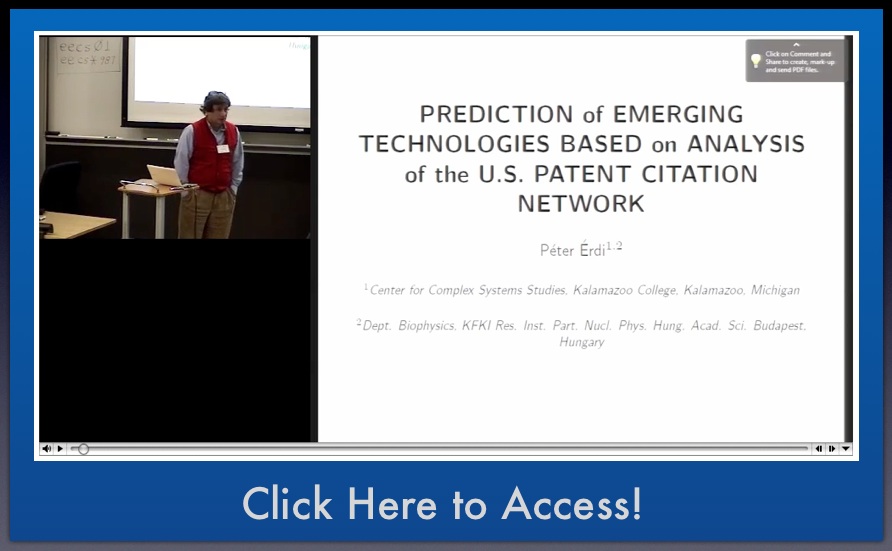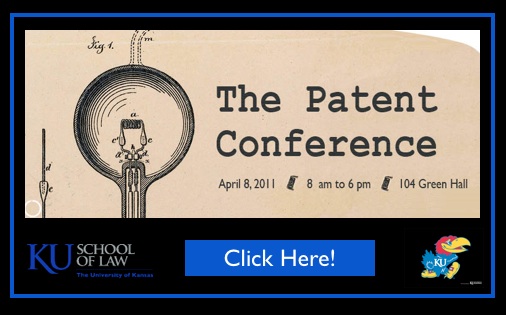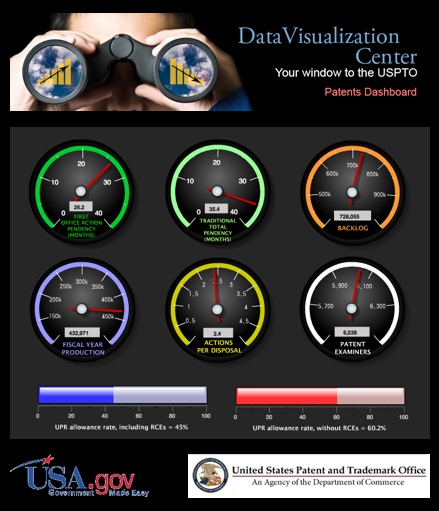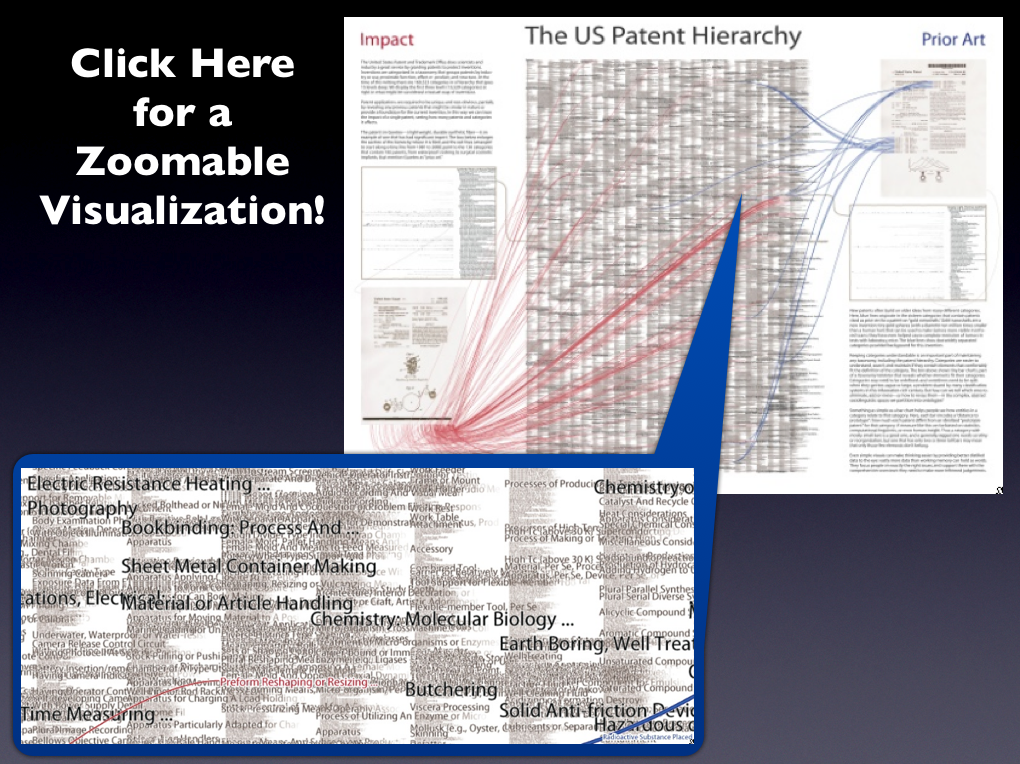Tag: patents
Global Patent Map Reveals the Structure of Technological Progress (via MIT Technology Review)
 This is topic of great interest for a number of reasons. Mike, Jon and I have several papers in this basic direction (with hopefully more coming soon). Probably the most relevant of our paper is “Distance Measures for Dynamic Citation Networks” which we published in Physica A back in late-2010. For those who might be interested – a copy of our paper (with James H. Fowler) is available on SSRN and on ArXiv.
This is topic of great interest for a number of reasons. Mike, Jon and I have several papers in this basic direction (with hopefully more coming soon). Probably the most relevant of our paper is “Distance Measures for Dynamic Citation Networks” which we published in Physica A back in late-2010. For those who might be interested – a copy of our paper (with James H. Fowler) is available on SSRN and on ArXiv.
Prediction of Emerging Technologies Based on Analysis of the U.S. Patent Citation Network [ via Peter Erdi and UMich EECS ]
Dr. Peter Erdi is one of the leading scholars studying the path of innovation as revealed through the U.S. Patent Citation network. Above is his most recent talk – Prediction of Emerging Technologies Based on Analysis of the U.S. Patent Citation Network
For some of his additional work please see:
Patent Citation Networks Revisited: Signs of a Twenty-First Century Change?, North Carolina Law Review (2009).
Modeling Innovation by a Kinetic Description of the Patent Citation System, Physica A (2007)
Law and the Science of Networks: An Overview and an Application to the ‘Patent Explosion’, Berkeley Technology Law Journal (2007).
[Note: Load Time for the Video above is a bit slow]
The Patent Conference @ KU Law
Today, I am traveling to Kansas for The Patent Conference (aka Pat Con). Tomorrow, I will be presenting our methods paper Distance Measure for Dynamic Citation Networks (published in the Statistical Mechanics Journal – Physica A in October 2010). While the specific applied example in paper is focused on case-to-case legal citations, the formalization and method we present therein has general form applicability to all dynamic direct acyclic graphs (including the patent citation network). Thus, we are interested in discussing how to leverage our approach to better understand the path of innovation that is revealed in datasets such as the NBER patent dataset.
The Bilski Case: Still Waiting for the Supreme Court’s Decision
Along with a non-trivial subset of the legal blogosphere, we eagerly await the Supreme Court’s decision in the Bilski case. Perhaps tomorrow will be the day? In the meantime, here are a variety of thoughts on the matter. Bilski Blog / EFF / Now Europe / PatentlyO / GenomicsLawReport / Ipwatchdog / Fenwick&West / InsideCounsel. This one from Greg Laden is also fun.
Google Wave — A Promising Platform for Real-Time Collaboration
Also from the good folks at Google Scholar comes caselaw and patents together with metadata, page tags and a nice “how cited” feature. Here is the announcement from the GoogleBlog. Useful analysis available at Legal Informatics Blog, Just in Case and Internet for Lawyers. Enjoy!
Classifying the US Patent Hierarchy
The United States Patent and Trademark Office patent classification scheme organizes 3 million patents into about 160,000 distinct patent classes. This visualization by Katy Börner, Elisha Hardy, Bruce W. Herr II, Todd M. Holloway, & W. Bradford Paley considers the organizational schema used to classify patents at the US Patent Office. Their article Taxonomy Visualization in Support of the Semi-Automatic Validation and Optimization of Organizational Schemas was published in the Journal of Informetrics in 2007.
From the Abstract: “The taxonomy visualization and validation (TV) tool introduced in this paper supports the semi-automatic validation and optimization of organizational schemas such as file directories, classification hierarchies, taxonomies, or other structures imposed on a data set for organization, access, and naming. By showing the “goodness of fit” for a schema and the potentially millions of entities it organizes, the TV tool eases the identification and reclassification of misclassified information entities, the identification of classes that grow too large, the evaluation of the size and homogeneity of existing classes, the examination of the “well-formedness” of an organizational schema, and more.”










